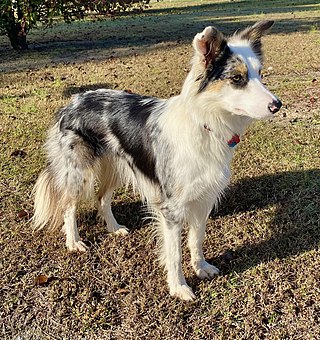
The Border Collie is a British breed of herding dog of the collie type of medium size. It originates in the region of the Anglo-Scottish border, and descends from the traditional sheepdogs once found all over the British Isles. It is kept mostly as a working sheep-herding dog or as a companion animal. It competes with success in sheepdog trials. It has been claimed that it is the "most intelligent" breed of dog.

A herding dog, also known as a stock dog, shepherd dog, sheep dog or working dog, is a type of dog that either has been trained in herding or belongs to breeds that are developed for herding.

Collies form a distinctive type of herding dogs, including many related landraces and standardized breeds. The type originated in Scotland and Northern England. Collies are medium-sized, fairly lightly-built dogs, with pointed snouts. Many types have a distinctive white color over the shoulders. Collies are very active and agile, and most types of collies have a very strong herding instinct. Collie breeds have spread through many parts of the world, and have diversified into many varieties, sometimes mixed with other dog types.

The Puli is a small-medium breed of Hungarian herding dog known for its long, corded coat. The tight curls of the coat appear similar to dreadlocks. A similar-looking, but much larger breed – also Hungarian – is the Komondor. The plural form of Puli is Pulik in Hungarian.

The Rough Collie is a long-coated dog breed of medium to large size that, in its original form, was a type of collie used and bred for herding sheep in Scotland. More recent breeding has focused on the Collie as a show dog, and also companion. The breed specifications call for a distinctive long narrow tapered snout and tipped (semiprick) ears, so some dogs have their ears taped when young. Rough Collies generally come in shades of sable and white, blue merle, tri-colored, and colour-headed white.

Hachikō was a Japanese Akita dog remembered for his remarkable loyalty to his owner, Hidesaburō Ueno, for whom he continued to wait for over nine years following Ueno's death.

George Graham Vest was a U.S. politician. Born in Frankfort, Kentucky, he was known for his skills in oration and debate. Vest, a lawyer as well as a politician, served as a Missouri Congressman, a Confederate Congressman during the Civil War, and finally a U.S. Senator.

"Man's best friend" is a common phrase used to describe domestic dogs referring to their multi-millennia long history of close relations, loyalty, friendship, and companionship with humans. The first recorded use of a related phrase is by Frederick the Great of Prussia. It was likely popularized by its use in a poem by Ogden Nash and has since become a common colloquialism.

The Battle of Bear Paw was the final engagement of the Nez Perce War of 1877. Following a 1,200-mile (1,900 km) running fight from north central Idaho Territory over the previous four months, the U.S. Army managed to corner most of the Nez Perce led by Chief Joseph in early October 1877 in northern Montana Territory, just 42 miles (68 km) south of the border with Canada, where the Nez Perce intended to seek refuge from persecution by the U.S. government.
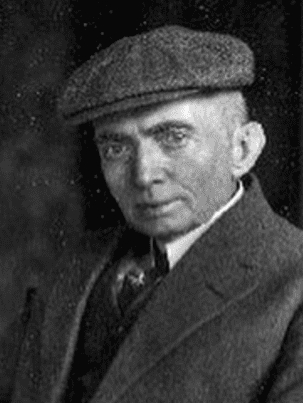
Cassius Marcellus Coolidge was an American artist, mainly known for his series of paintings Dogs Playing Poker. Known as "Cash" or "Kash" in his family, he often signed his work in the 19th century with the latter spelling, sometimes spelling his name, for comic effect, as Kash Koolidge.

In Homer's Odyssey, Argos is Odysseus' faithful dog.
"Jurassic Bark" is the seventh episode in the fourth season of the American animated television series Futurama, and the 61st episode of the series overall. It first aired on the Fox network in the United States on November 17, 2002. The plot revolves around Fry, who finds a fossilized version of his dog Seymour from before he was frozen. Fry seeks to have his pet brought back to life. The episode was nominated for an Emmy Award but lost to The Simpsons episode "Three Gays of the Condo".
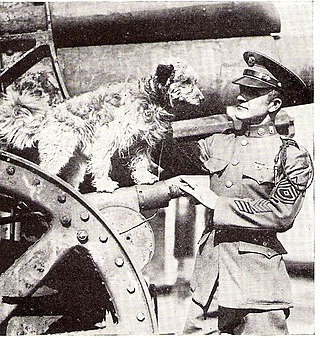
Rags was a mixed breed terrier who became the U.S. 1st Infantry Division's dog-mascot in World War I.

Challenge to Lassie is an American drama directed by Richard Thorpe in Technicolor and released October 31, 1949, by MGM Studios. It was the fifth feature film starring the original Lassie, a collie named Pal, and the fourth and final Lassie film starring Donald Crisp.

The Slovak Cuvac is a Slovak breed of dog, bred for use as a livestock guard dog. This breed—also known as Slovensky Cuvac, Slovak Chuvach, Tatransky Cuvac and Slovensky Kuvac—is closely related to the Hungarian Kuvasz. The alternate German and English spelling Tchouvatch reflects the pronunciation: chew-votch( čuvati - in serbocroatian language - guarding). The breed is recognised under sponsorship from Slovakia by the Fédération Cynologique Internationale with the name Slovenský čuvač. Despite the multiple renderings in English, these refer to only one breed. The United Kennel Club in the US uses the English version of the name Slovak Cuvac.

Hachi: A Dog's Tale is a 2009 American drama film and a remake of Kaneto Shindo's 1987 Japanese film Hachikō Monogatari. The original film told the true story of the Akita dog named Hachikō who lived in Japan 1923-1935. This film is an American adaptation of true story set in 1985 Japan about a professor and his devoted dog. This version, which places it in a modern American context, was directed by Lasse Hallström, written by Stephen P. Lindsey and Kaneto Shindo, and produced by Richard Gere, Bill Johnson and Vicki Shigekuni Wong. The film stars Gere, Joan Allen, Sarah Roemer, Jason Alexander and Cary-Hiroyuki Tagawa.
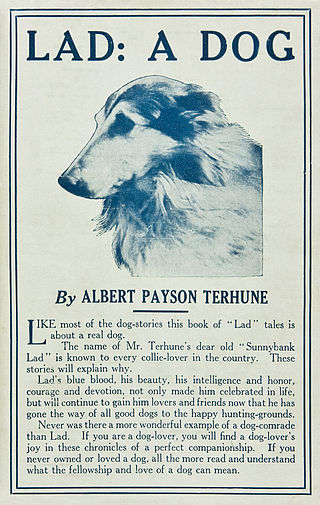
Lad: A Dog is a 1919 American novel written by Albert Payson Terhune and published by E. P. Dutton. Composed of twelve short stories first published in magazines, the novel is based on the life of Terhune's real-life Rough Collie, Lad. Born in 1902, the real-life Lad was an unregistered collie of unknown lineage originally owned by Terhune's father. Lad's death in 1918 was mourned by many of the story's fans, particularly children.
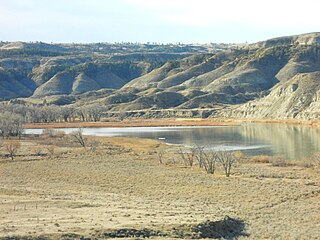
Cow Island lies in a left turning bend of the Missouri River, in the area known as the Missouri River Breaks. The island is formed by sediments that are seasonally washed out from the mouths of Cow Creek and Bull Creek, which enter the Missouri River just upstream from Cow Island. The island is about 1.2 miles long and averages about 150 yards in width. It is located in extreme northern Fergus County, but lies across the river from extreme southern Blaine County, to its east.



















